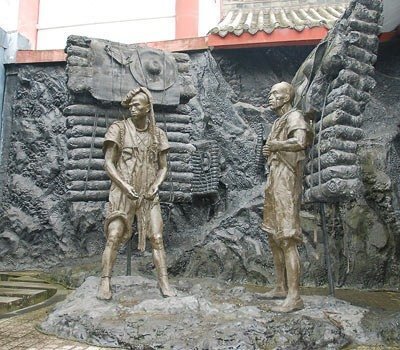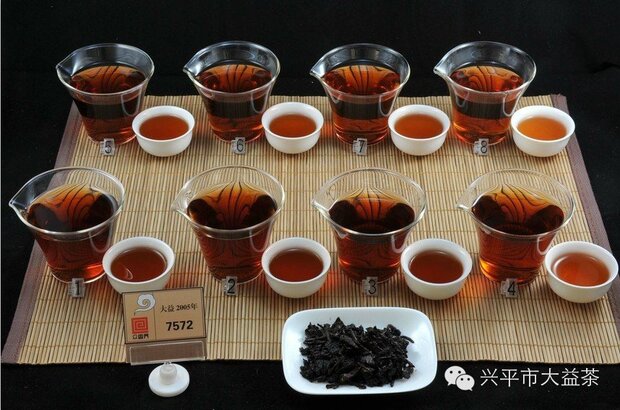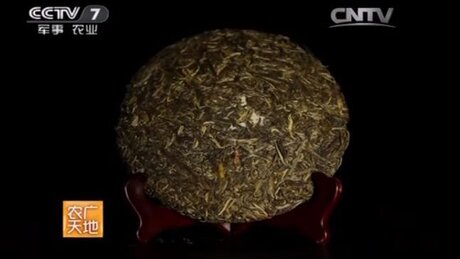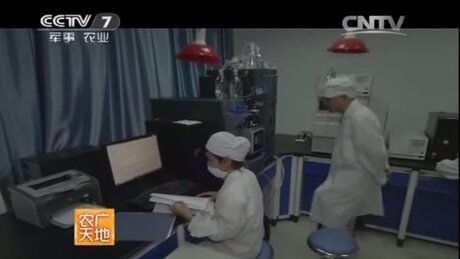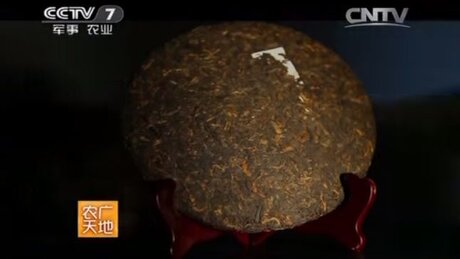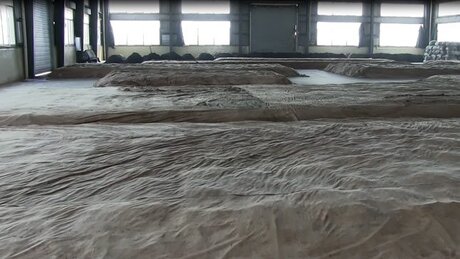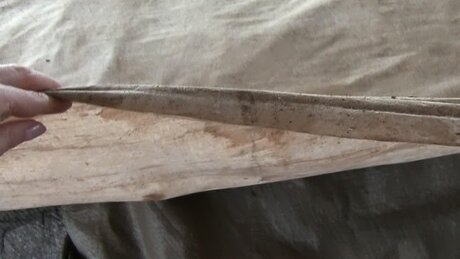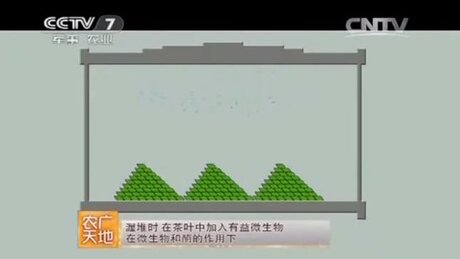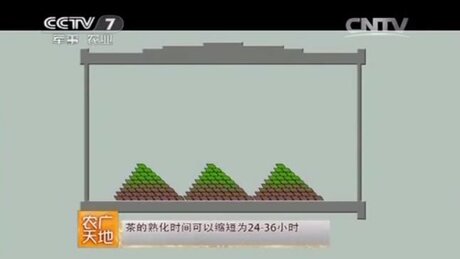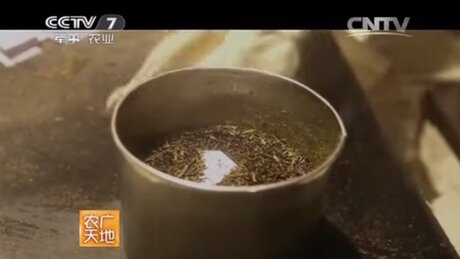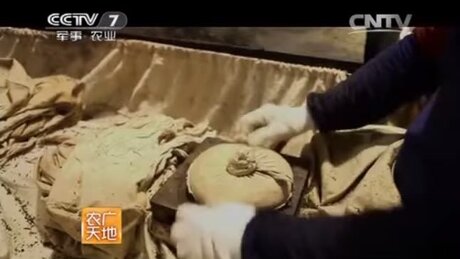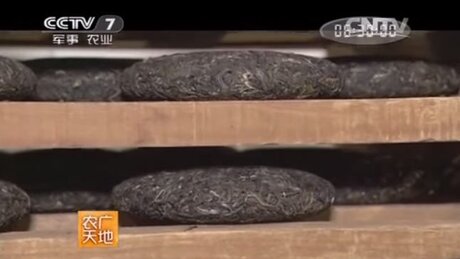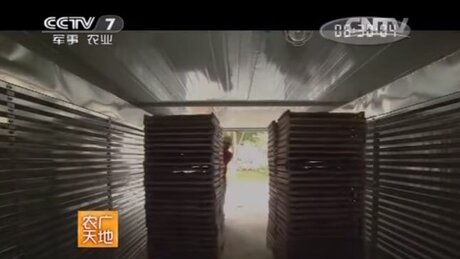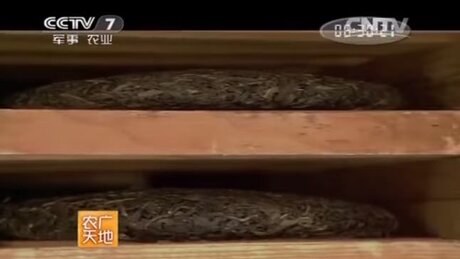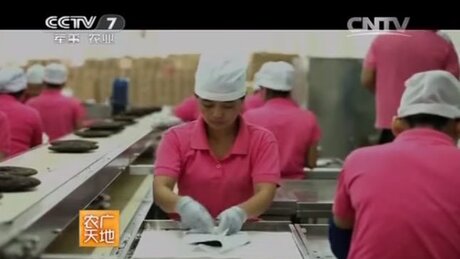Shu pu’er is the youngest of «Six great Chinese tea kinds». Its production technology appeared only in 1970-th and rapidly took on Chinese and European market. Shu is produced of ready-made sheng pu’er by means of accelerated fermentation through zymosis. Sounds simple but each statement is quite disputable and requires detailed explanations.
Thus the very notion of shu pu’er is quite old. The name «sheng» (生) means young, raw, unfinished, new. Since the old time this was the name of young pu’er implying that it is not yet ripe. As soon as the tea has reached its maturity it was called «shu» (熟), which is ripe, finished. Back in 1970-th after elaborating the recipe that would allow to imitate long aging of sheng pu’er the resulting tea has been called shu pu’er. So both these notions, shu and sheng, have migrated from the definition of natural pu’er maturity to the technology of its production. In some distant Chinese villages you still may be offered shu pu’er, which is real aged sheng.
Since ancient times the tea from Yunnan was imported to the nearby regions. They are close by location on the map and by the custom to drink Yunnan tea, but the journey there was long. The famous «Ancient tea horse road» is 100 days journey through the mountains. Tea was either born by men or loaded on horses. It was wrapped in bamboo leaves. In three month of journey many things could happen. The tea often got soaked by rain. Getting dump it was naturally drying by itself. The traders noticed that sometimes it got spoiled, but in some cases conversely its flavor became more fragrant, dark and deep, as if the tea was made many years ago. Therewith it was known that in South where the climate is hot and humid the tea is aging faster then in dryer and colder North. Although there was no industrial process of accelerated tea ageing, the approach thereto became clear. However only in 1970-th took place the events that resulted in appearance of modern shu pu’er. Dates and preconditions of the invention in different narratives vary. But considering broad occurrence of cakes made (among others) by recipe 7262 may witness that back in 1972 shu pu’er could has already been in production.
According to one version some part of pu’er stock distributed through Kunming tea factory has been stored on the sports ground covered by tarpaulin. When uncovered the tea has surprised factory workers by dark color and altered flavor. They recalled that several rainy days, when water got on the tea through holes in tarpaulin, had been followed by hot weather but water could not swiftly evaporate from underneath the cover. Special microclimate that had formed there has made the tea to «ripen» quickly. Kunming and Menghai factories were commissioned by the government to research the «miracle» and to develop the technology of deliberate production of accelerated pu’er aging. Based on experiments and older experience factories have managed to create first samples. Therefore Menghai (Dai brand) and Kunming factories deserve to be considered as ancestors of shu pu’er.
Shu pu’er production uses Wodui (渥堆) technology, which translates as «wet pile» or «dump stack». It involves — as it is described by the manufacturers — covering of the tea by water mist. The tea is periodically stirred to prevent mold growth and rotting and covered by tarpaulin. In such humid environment with limited air access where water can not evaporate swiftly the temperature under tarpaulin increases significantly. It boosts zymosis, growth of microorganisms and fermentation processes. The tea becomes much darker in color. Flavor and aroma get sweeter acquiring bright shades of fruit, nuts and autumn. The final result depends on the feedstock, time of fermentation and the skill of teamaker. Factories develop special recipes. To make pu’ers with more or less similar flavors specific tea leaves are used attempting to precisely reproduce the original technology.
Normally factories produce loose-leaf shu pu’er out of loose-leaf sheng pu’er and then compress it into cakes. However there is another technology whereby already compressed cakes are stacked on shelves and sealed in small chambers with high humidity and temperature. Cakes begin to ripen quickly. It is disputable which production method is more appropriate or healthy. In the first case fermentation develops evenly and is controllable, while in the second the process is most approximated to the natural pu’er aging.
Production of shu pu’er predominantly uses autumn leaf, often gathered from bushes in plain areas. Such raw stock is cheaper than one used for production of descent sheng pu’er. The tea transforms so greatly that manufacturers do not consider it worthwhile to use valuable spring quality feedstock. In China shu pu’er is much less valued than sheng pu’er. There are some exceptions though. Despite of the fact that the technology was developed for acceleration of sheng pu’er aging it gave absolutely new kind of tea. Therefore the value of shu pu’er increases after long time aging. When unsavory tastes of stacking disappear and the flavor becomes stable and complete.
It is covered by cloth with tarpaulin or other material able to prevent moist evaporation underneath.
On the bottom is the tea. Not much treat is given to cheap shu pu’er. So one may encounter nails, hear or other trash in cakes.
Schematically it looks as follows. Sheng pu’er is spread on the floor on a room where water is spilled on it.
Gradually from bottom to top moves fermentation changing tea leaves. The tea should be stirred and mixed from time to time.
Production time lasts up to 90 days. Technologies vary. Therefore the optimal temperature, humidity rate and time periods differ.
At the end of processing tea is dried a little, which is not compulsory as it proceeds to compression.
Tea dries for 1.5 days. This is an important stage to cease principal fermentation and to prevent possible mold grow in a cake. But the tea will continue its transformation.
Water temperature should reach 100°С. As far as shu pu’er production process is quite durable and absolutely insanitary, always wash the tea. Shu pu’er is treated as ripe sheng. Thick-walled ceramics and clay would fit the best. The higher the temperature in a brewing vessel the better and brighter the tea will reveal itself. It can be boiled immediately after production. The flavor of the drink remains quite questionable though.
Same principles as for sheng pu’er or any black tea. If proper ripening of sheng pu’er is important to you, it should be stored in air accessed conditions. Therefore cakes are wrapped in paper instead of vacuum sealing. At home it’s better to find a shaded shelf with good (but not too intensive) aeration and with middle humidity level. The main thing — no strong and acute smells. Book shelves are always good for the purpose. Refrigerator, kitchen, smoking premises are foes of pu’er. In winter time our houses may be too dry for aging of pu’er. Excess humidity will provoke the mold growth.
Illustrated by screenshots from film 农广天地 普洱茶制作技艺 and from personal files.

